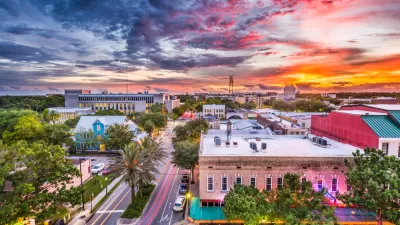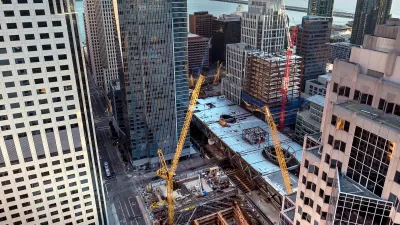Mayor de Blasio's goal of building or preserving 200,000 units of affordable housing over the next 10 years goes beyond what previous mayors have been able to achieve. How realistic are his chances of reaching this "lofty goal"?
After investing more than $5.3 billion in affordable housing, the Bloomberg administration saved or added 165,000 units over 12 years. Though Mayor de Blasio has made affordable housing production a centerpiece of his agenda, cuts in federal subsidy programs and other forces are likely to make the path to achieving his goal much more difficult.
"Jeff Levine, a developer who took advantage of the [Bloomberg era] rezonings to build and include affordable units, said of the 200,000-unit goal, 'It’d take an incredibly intelligent effort on the part of the public and private sectors.'”
"But affordable housing advocates say Mr. de Blasio comes to office with one critical advantage — his stated commitment to more-equitable housing policies," notes Mireya Navarro. By making affordable housing production mandatory under inclusionary zoning regulations, rather than optional, some believe de Blasio could spur the production of 25,000 to 50,000 affordable units.
"Under Mayor Bloomberg the idea was that all development is good, said Moses Gates, director of housing assistance for the Association for Neighborhood and Housing Development, an advocacy group. 'The shift we need to see to put a dent in our affordability crisis is, we want developers to build what the city needs, rather than just get stuff built.'”

Planetizen Federal Action Tracker
A weekly monitor of how Trump’s orders and actions are impacting planners and planning in America.

Congressman Proposes Bill to Rename DC Metro “Trump Train”
The Make Autorail Great Again Act would withhold federal funding to the system until the Washington Metropolitan Area Transit Authority (WMATA), rebrands as the Washington Metropolitan Authority for Greater Access (WMAGA).

The Simple Legislative Tool Transforming Vacant Downtowns
In California, Michigan and Georgia, an easy win is bringing dollars — and delight — back to city centers.

The States Losing Rural Delivery Rooms at an Alarming Pace
In some states, as few as 9% of rural hospitals still deliver babies. As a result, rising pre-term births, no adequate pre-term care and "harrowing" close calls are a growing reality.

The Small South Asian Republic Going all in on EVs
Thanks to one simple policy change less than five years ago, 65% of new cars in this Himalayan country are now electric.

DC Backpedals on Bike Lane Protection, Swaps Barriers for Paint
Citing aesthetic concerns, the city is removing the concrete barriers and flexposts that once separated Arizona Avenue cyclists from motor vehicles.
Urban Design for Planners 1: Software Tools
This six-course series explores essential urban design concepts using open source software and equips planners with the tools they need to participate fully in the urban design process.
Planning for Universal Design
Learn the tools for implementing Universal Design in planning regulations.
Smith Gee Studio
City of Charlotte
City of Camden Redevelopment Agency
City of Astoria
Transportation Research & Education Center (TREC) at Portland State University
US High Speed Rail Association
City of Camden Redevelopment Agency
Municipality of Princeton (NJ)




























